
Heart Rhythm O2
Scope & Guideline
Bridging science and practice in heart rhythm management.
Introduction
Aims and Scopes
- Cardiac Electrophysiology Research:
The journal emphasizes studies related to the mechanisms, diagnosis, and treatment of arrhythmias, including atrial fibrillation, ventricular tachycardia, and other rhythm disorders. - Innovative Ablation Techniques:
Research on various ablation techniques, including cryoablation, radiofrequency ablation, and newer methods such as pulsed-field ablation, is a core focus, aimed at improving procedural safety and efficacy. - Use of Technology in Cardiac Care:
The journal explores the integration of advanced technologies such as machine learning, remote monitoring, and novel imaging techniques in the management of cardiac arrhythmias. - Patient Outcomes and Quality of Life:
The journal publishes studies that assess the impact of arrhythmia treatments on patient-reported outcomes, quality of life, and psychosocial factors, emphasizing a holistic approach to care. - Global Health Perspectives in Electrophysiology:
Research addressing disparities in arrhythmia care globally, with a focus on improving access and outcomes in underserved populations.
Trending and Emerging
- Remote Monitoring and Digital Health:
The increasing reliance on remote monitoring technologies for cardiac devices is a significant trend, emphasizing the need for innovative solutions to enhance patient adherence and outcomes. - Integration of Artificial Intelligence and Machine Learning:
There is a growing focus on utilizing AI and machine learning algorithms for arrhythmia detection and management, which is anticipated to revolutionize the approach to cardiac care. - Personalized and Precision Medicine:
Research is increasingly centered on personalized treatment strategies for arrhythmias, taking into account genetic, environmental, and lifestyle factors that influence patient care. - Focus on Gender and Racial Disparities in Cardiac Care:
Emerging studies address how gender and racial differences affect arrhythmia outcomes and treatment efficacy, pushing for more inclusive research that tailors interventions to diverse populations. - Safety and Efficacy of New Devices and Techniques:
There is a notable trend towards evaluating the safety and efficacy of new technologies and devices, such as leadless pacemakers and novel ablation techniques, reflecting the journal's commitment to innovation.
Declining or Waning
- Traditional Electrophysiology Techniques:
There has been a noticeable decrease in publications focusing on older, less innovative electrophysiology techniques, as newer methods and technologies gain traction. - Generalized Patient Population Studies:
Studies that do not specifically address unique populations or conditions have become less frequent, as there is a shift towards more targeted research that offers insights into specific patient demographics and conditions. - Basic Science Research without Clinical Application:
Research that remains strictly within the realm of basic science and lacks immediate clinical relevance or application is being published less frequently, as the journal prioritizes translational research.
Similar Journals
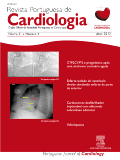
Revista Portuguesa de Cardiologia
Fostering collaboration and knowledge in the heart of cardiology.Revista Portuguesa de Cardiologia, published by Elsevier España SLU, stands as a pivotal resource in the realm of Cardiology and Cardiovascular Medicine. With its origins tracing back to 1970, this journal has cultivated a robust academic presence, achieving a 2023 Q3 ranking in its category, and currently holding a position of #220 out of 387 on the Scopus rankings, placing it within the 43rd percentile of its field. This open access journal, available since 2011, aims to disseminate high-quality research and insights relevant to contemporary cardiovascular issues. Its commitment to accessibility and knowledge exchange enhances its importance for clinicians, researchers, and students alike, fostering a more informed community in the fight against cardiovascular diseases. Operating from its base in Barcelona, Spain, the journal welcomes contributions that further the understanding and treatment of heart conditions, contributing significantly to the advancement of cardiovascular health.

JACC-Clinical Electrophysiology
Connecting Researchers and Clinicians in ElectrophysiologyJACC-Clinical Electrophysiology, published by Elsevier, stands as a leading journal in the fields of Cardiology and Physiology, with an esteemed Q1 ranking in both categories as of 2023. With an ISSN of 2405-500X and E-ISSN 2405-5018, this journal serves as an essential platform for disseminating cutting-edge research, clinical studies, and innovative practices related to electrophysiological aspects of cardiovascular health. Established in 2015, JACC-Clinical Electrophysiology has attracted high-quality submissions, reflected in its strong presence on Scopus, ranking 41st out of 387 in Cardiology and 15th out of 113 in Physiology (medical), placing it in the 89th and 87th percentiles respectively. Though it operates on a subscription model, its commitment to high standards of peer-reviewed scholarship makes it an indispensable resource for researchers, clinicians, and students dedicated to advancing knowledge and practice in electrophysiology and its impact on cardiac care. Join the community of leaders in the field by engaging with the latest findings and discussions published in this prestigious journal.

Revista de la Federacion Argentina de Cardiologia
Advancing cardiovascular knowledge for a healthier tomorrow.Revista de la Federacion Argentina de Cardiologia is a vital publication in the field of Cardiology and Cardiovascular Medicine, providing a platform for researchers and healthcare professionals to share significant findings and innovative concepts since its inception in 2012. Published by the Federacion Argentina Cardiology, this journal specifically addresses contemporary issues and advancements within cardiology, contributing to the scholarly dialogue essential for improving cardiovascular health. Despite being categorized in the Q4 quartile for 2023 and presently ranking #358 out of 387 in its field, the journal remains committed to fostering academic inquiry and disseminating valuable research for both local and global audiences. Although it is not an open-access journal, it strives to balance accessibility with rigorous academic standards, ensuring quality contributions that are critical for practitioners and students alike. The journal’s ongoing evaluation and adaptation in the ever-evolving landscape of cardiology underscore its importance in advancing cardiovascular science and practice.
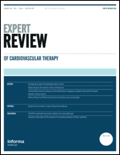
Expert Review of Cardiovascular Therapy
Innovating the Future of Cardiovascular MedicineExpert Review of Cardiovascular Therapy is a leading academic journal published by TAYLOR & FRANCIS INC, focusing on innovative and impactful research in the field of cardiovascular medicine. With an ISSN of 1477-9072 and an E-ISSN of 1744-8344, this journal serves as an essential resource for researchers, clinicians, and educators, offering a platform for the dissemination of critical advancements in cardiovascular therapy and internal medicine. Since its inception in 2003, the journal has maintained a reputable standing with a Q2 ranking in various categories including Cardiology and Cardiovascular Medicine, reflecting its influence and rigor in the field. The journal, which is based in the United Kingdom, does not currently offer Open Access options, ensuring that its content is accessible primarily to subscribers. With its commitment to high-quality, peer-reviewed articles, Expert Review of Cardiovascular Therapy is dedicated to bridging the gap between experimental research and clinical application, thereby enhancing patient care and therapeutic outcomes in cardiovascular health.
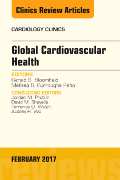
CARDIOLOGY CLINICS
Transforming clinical practice with impactful cardiology research.CARDIOLOGY CLINICS is a prestigious journal published by W B SAUNDERS CO-ELSEVIER INC, offering insightful and comprehensive reviews in the field of cardiology and cardiovascular medicine since its inception in 1983. With its ISSN 0733-8651 and E-ISSN 1558-2264, the journal has established a significant impact factor within the academic community, holding a Q2 ranking in both Cardiology and Cardiovascular Medicine as well as in Medicine (miscellaneous) for 2023. Located in the heart of Philadelphia, USA, it serves as a vital resource for researchers, clinicians, and students seeking to deepen their understanding of cardiovascular diseases and advancements in treatment. Although it operates under a traditional subscription model, the journal remains committed to disseminating valuable knowledge that shapes current practices and informs future research directions. As it converges towards its 2024 issues, CARDIOLOGY CLINICS continues to play an influential role in enhancing the discourse on cardiovascular health worldwide, ensuring that its audience stays at the forefront of clinical and scientific developments.

Indian Journal of Thoracic and Cardiovascular Surgery
Fostering Collaboration in Thoracic and Cardiovascular AdvancementsIndian Journal of Thoracic and Cardiovascular Surgery, published by SPRINGER INDIA, serves as a vital platform for the dissemination of innovative research and clinical advancements in the fields of cardiology, cardiovascular medicine, pulmonary, and respiratory medicine. With a rich history dating back to 1982 and spanning multiple years through to 2024, this journal aims to provide a comprehensive view of both theoretical and practical aspects of thoracic and cardiovascular surgery. Although it currently holds a Q3 quartile ranking across various relevant categories, researchers and practitioners can benefit from its insightful articles that contribute to ongoing discussions and advancements in these critical medical areas. The journal does not offer open access presently, yet it is accessible through major academic databases, providing valuable resources for professionals and students keen on enhancing their understanding and expertise. In a rapidly evolving field marked by technological advancements and novel research, the Indian Journal of Thoracic and Cardiovascular Surgery remains integral to fostering collaboration and education among its audience.

World Journal of Cardiology
Exploring the frontiers of cardiology and cardiovascular medicine.World Journal of Cardiology, published by BAISHIDENG PUBLISHING GROUP INC, stands out as a pivotal resource in the field of cardiology and cardiovascular medicine. With an ISSN of 1949-8462, this journal serves a global audience, promoting knowledge dissemination and collaboration among researchers, healthcare professionals, and students dedicated to advancing cardiovascular health. The journal demonstrates its credibility and impact in the field by achieving a respectable Q2 ranking in the 2023 category of Cardiology and Cardiovascular Medicine. Notably, it is listed in the Scopus database, ranking #189 out of 387 journals, placing it in the 51st percentile, which underscores its relevance and contribution to contemporary cardiovascular research. Although it operates under a subscription model, the journal provides diverse access options, ensuring that critical findings reach a wide audience. Through its comprehensive scope and commitment to publishing high-quality articles, the World Journal of Cardiology plays a vital role in shaping the future of cardiovascular science, making it an invaluable asset for those involved in this essential discipline.

JOURNAL OF CARDIOVASCULAR ELECTROPHYSIOLOGY
Innovating Cardiovascular Insights for TomorrowJOURNAL OF CARDIOVASCULAR ELECTROPHYSIOLOGY, published by Wiley, stands at the forefront of the fields of Cardiology and Cardiovascular Medicine, boasting an impressive Impact Factor that reflects its scholarly influence. With a strong focus on innovative research, this esteemed journal has been a vital resource for advancing our understanding of electrophysiological concepts since its inception in 1990. As a Q1 journal in both Cardiology and Physiology (medical) as of 2023, it provides a platform for cutting-edge discoveries and comprehensive reviews that cater to the academic and clinical needs of researchers, practitioners, and students alike. The journal features rigorous peer-reviewed articles that delve into various aspects of cardiovascular health, enhancing both theoretical knowledge and clinical application. Although it does not offer open access, it remains a key resource for those engaged in cardiovascular research, published quarterly through 2024 to ensure timely dissemination of high-quality findings.
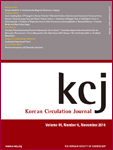
Korean Circulation Journal
Elevating Cardiovascular Science Through Innovative Research.Korean Circulation Journal, published by the Korean Society of Cardiology, has established itself as a prominent platform for disseminating research in the fields of Cardiology and Cardiovascular Medicine. With an ISSN of 1738-5520 and an E-ISSN of 1738-5555, this journal has been at the forefront of cardiovascular science since its inception in 2006 and is projected to continue until 2024. The journal's commitment to quality is reflected in its 2023 category quartiles, ranking in the second quartile (Q2) for both Cardiology and Internal Medicine, as well as its commendable Scopus rankings within the respective fields. Located in South Korea, the journal aims to bridge the gap between cutting-edge research and practical applications, serving as an invaluable resource for researchers, healthcare professionals, and students keen on advancing their understanding of cardiovascular health. Although currently not an open-access journal, it provides a wealth of knowledge that encourages evidence-based practice in clinical settings.
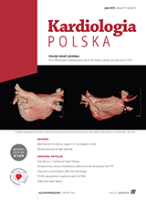
Kardiologia Polska
Enhancing Cardiovascular Care with Every PublicationKardiologia Polska, the esteemed journal of the Polish Cardiac Society, has established itself as a vital resource in the field of cardiology and cardiovascular medicine since its inception in 1954. With an ISSN of 0022-9032 and an E-ISSN of 1897-4279, this journal serves as a platform for groundbreaking research and scholarly articles that contribute to the advancement of heart health. Although currently not an open access journal, it remains an essential reference for practitioners and researchers seeking to stay abreast of the latest developments in cardiovascular science. The journal reflects its scholarly depth through a Category Quartile of Q3 and a commendable Scopus ranking at the 48th percentile in its field. Published primarily in Poland, it caters to a global audience eager to explore comprehensive studies spanning clinical cardiology, innovative therapeutic approaches, and emerging cardiovascular trends. Join a thriving academic community by engaging with the invaluable insights and research contributions found within the pages of Kardiologia Polska.